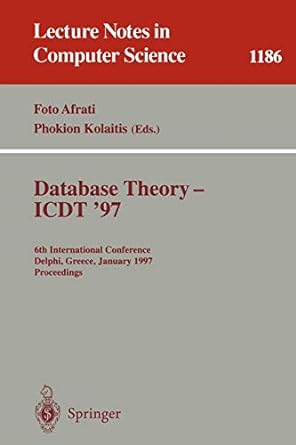Answered step by step
Verified Expert Solution
Question
1 Approved Answer
Go programming The following program is to be changed such that it uses arbitrary sized slices instead of fixed size arrays. In particular, the user
Go programming
The following program is to be changed such that it uses arbitrary sized slices instead of fixed size arrays. In particular, the user entered size (variable sz) is to replace the hard-coded 32 in main and any function changed correspondingly.
package main import "fmt" import "math" import "math/rand" type Series struct { a, b float64 } func (s Series) add(t, TP int) float64 { return s.a*math.Sin(2.0*math.Pi*float64(t)/float64(TP)) + s.b*math.Cos(2.0*math.Pi*float64(t)/float64(TP)) } func fourier(c [32]Series, t, TP int) (res float64) { res = c[0].a for n := 1; n < 32; n++ { res += c[n].add(t, TP) } return } func main() { TP := 4 sz := 1 var res float64 // Enter size of fourier series fmt.Print("Size of series (1 ... 512): ") // Depending on your environment you may have to remove in the scanf _, err := fmt.Scanf("%d ", &sz) for err != nil || sz < 1 || sz > 512 { fmt.Println("Must be positive integer (1...512).") fmt.Println("Size of series (1 ... 512): ") _, err = fmt.Scanf("%d ", &sz) } fmt.Printf("Size: %d ", sz) var c [32]Series for t := 0; t < TP; t++ { for k := 0; k < 32; k++ { c[k].a = rand.Float64() c[k].b = rand.Float64() } res += fourier(c, t, TP) fmt.Printf("%f ", res) fmt.Println() } } Step by Step Solution
There are 3 Steps involved in it
Step: 1

Get Instant Access to Expert-Tailored Solutions
See step-by-step solutions with expert insights and AI powered tools for academic success
Step: 2

Step: 3

Ace Your Homework with AI
Get the answers you need in no time with our AI-driven, step-by-step assistance
Get Started


